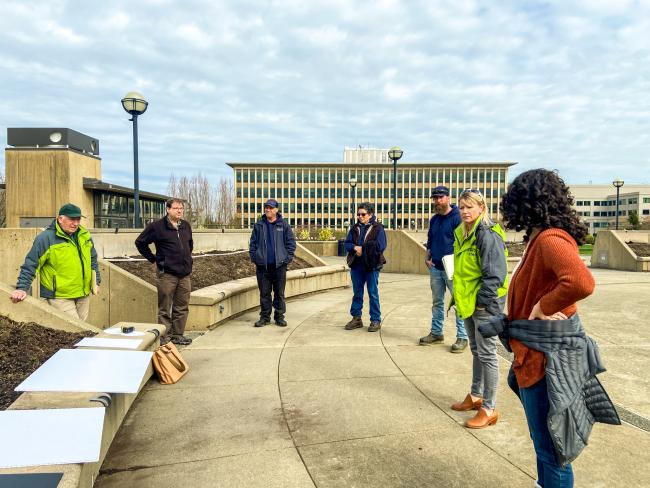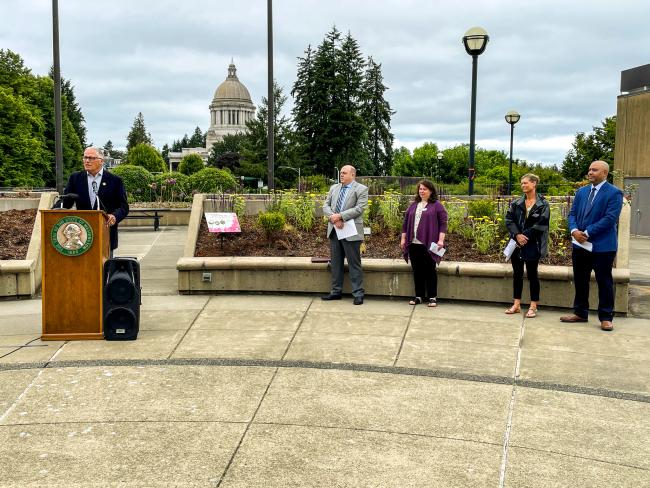
How a garden on Capitol Campus attracts birds, bees and butterflies – and people, too
Opportunity
Without pollinators like birds, bees and butterflies, many plants, flowers and trees wouldn't exist. In fact, 85% of the world’s flowering plants depend on pollinators to reproduce! To support pollinator habitats in Washington state, public works projects that include landscaping must allocate at least 25 percent of the planted area for the feeding, nesting, and reproduction of all pollinators, including honey bees.
On the state's Capitol Campus, DES buildings and grounds staff saw an opportunity for a new pollinator habitat by repurposing an area where rapidly growing bamboo was harming the concrete. After the state legislature approved funding to repurpose eight large concrete planters into a large pollinator garden, DES went to work to design and develop the new garden.
Approach
The project was in collaboration with many organizations during the process, including the Office of the Governor, Washington State Department of Fish & Wildlife, Washington State Department of Agriculture, Woodland Park Zoo, Xerces Society, Squaxin Island Tribe, Nisqually Indian Tribe, and Chehalis Tribe.
At about 1,000 square feet, the garden sits over the 14th Avenue tunnel in Olympia. In addition to attracting pollinators, the garden was designed to attract human visitors and educate on the importance of pollinators. The Woodland Park Zoo donated interpretive signs for visitors to read while enjoying the garden.
"This historic pollinator garden is a true testament to the value of partnerships between state agencies and community organizations," said Rubai Aurora, manager of government and community partnerships for Woodland Park Zoo. "We were all inspired to not only bring our professional expertise, but our passion for pollinator conservation to make this project happen. It’s only the start of much more that we can accomplish together."
Results
The new pollinator garden was unveiled during National Pollinator Week in June 2022. Governor Inslee attended the open house, along with partners that supported the effort. DES was recognized by the Professional Grounds Management Society for its design and implementation of the Pollinator Garden, along with another recent project, the Sunken Garden.
In 2023, more interpretative signs will be added on campus to highlight the other pollinator gardens on the Capitol Campus.



